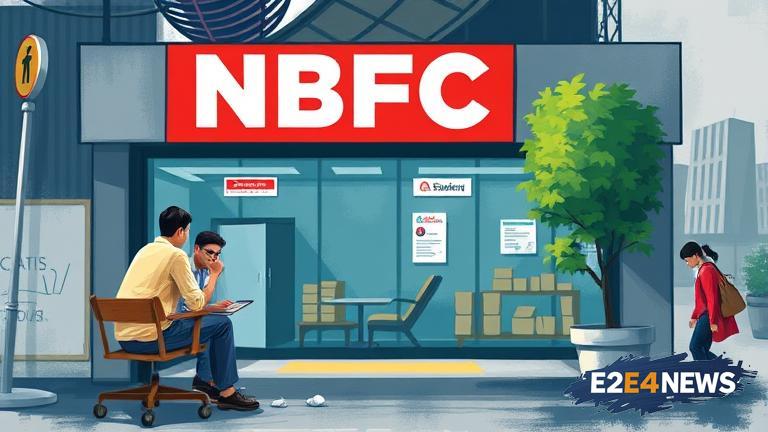The non-banking financial company (NBFC) sector in India is expected to experience a moderation in growth in the fiscal year 2026, according to a report by India Ratings. The primary reason for this slowdown is the reduction in funding from banks, which has been a crucial source of capital for NBFCs. As banks become more cautious in their lending practices, NBFCs are facing challenges in securing the necessary funds to support their growth plans. This reduction in funding is likely to have a ripple effect on the entire sector, impacting the ability of NBFCs to expand their operations and increase their asset under management (AUM). The India Ratings report highlights that the growth of NBFC AUM is expected to moderate to 10-12% in FY26, down from the 15-17% growth witnessed in the previous fiscal year. This slowdown is anticipated to be more pronounced in the first half of FY26, with a potential pickup in growth in the second half. The report also notes that the funding constraints faced by NBFCs are likely to lead to a increase in their cost of borrowing, which could further exacerbate the growth challenges. Furthermore, the reduction in bank funding is expected to lead to a greater reliance on other sources of funding, such as debt markets and external commercial borrowings. However, these alternative sources of funding may not be as readily available or as cost-effective as bank funding, which could further impact the growth prospects of NBFCs. In addition to the funding challenges, NBFCs are also facing increased competition from banks, which are expanding their reach and product offerings in the retail and small and medium-sized enterprise (SME) segments. This increased competition is likely to put pressure on the margins of NBFCs, making it even more challenging for them to achieve their growth targets. The India Ratings report also highlights the importance of regulatory support and policy measures to help mitigate the funding challenges faced by NBFCs. The report suggests that the government and regulatory authorities should consider implementing measures to enhance the flow of credit to NBFCs, such as providing guarantees or credit enhancements. Additionally, the report recommends that NBFCs should focus on diversifying their funding sources and improving their asset quality to reduce their dependence on bank funding. The slowdown in NBFC growth is also expected to have implications for the broader economy, as NBFCs play a critical role in providing credit to the retail and SME segments. A reduction in credit availability could lead to a slowdown in economic growth, which could have far-reaching consequences. In conclusion, the NBFC sector in India is facing significant funding challenges, which are expected to impact their growth prospects in FY26. While there are potential measures that can be taken to mitigate these challenges, it is essential for stakeholders to be aware of the potential risks and take proactive steps to address them. The India Ratings report provides valuable insights into the challenges faced by NBFCs and highlights the need for regulatory support and policy measures to help the sector navigate these challenges. As the sector continues to evolve, it is crucial for NBFCs to adapt to the changing landscape and develop strategies to overcome the funding challenges and achieve their growth objectives. The report’s findings are likely to be closely watched by stakeholders, including investors, regulators, and industry participants, as they seek to understand the implications of the slowdown in NBFC growth. Overall, the NBFC sector is at a critical juncture, and the ability of stakeholders to respond to the funding challenges will be crucial in determining the sector’s future growth prospects.
